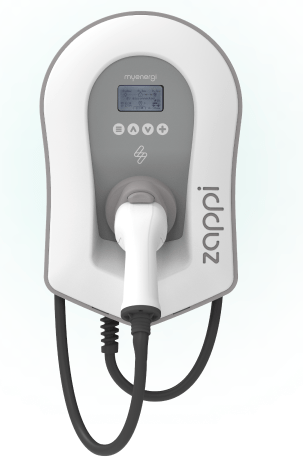- 7kW
- 439mm x 282mm x 122mm
- Solar & Wind Integration
- Tethered or Untethered
- 3kg-5.5kg
- Black or White
- EV Tariff Optimised
- Not V2G Compatible
*Price may vary based on type of installation, area and availability. See our ‘Standard installation‘ guide for more details.
Zappi EV Charger REVIEW
The MyEnergi Zappi is one of the UK’s most popular home EV chargers, especially favoured by drivers who want to charge their electric vehicles using solar power. This smart charger distinguishes itself with its ability to automatically adjust charging based on your home’s renewable energy production, making it a top choice for eco-conscious EV owners.
This review will help you determine the best Zappi charger for your needs by comparing different models, power outputs, and features such as tethered or untethered options, so you can select the optimal solution for your electric vehicle and home setup.
While the Zappi v2.1 may not win any beauty contests due to its larger, practical design, it more than compensates with robust build quality, ensuring reliable performance in various weather conditions, and advanced solar integration features. Its user-friendly interface and intuitive controls ensure a smooth experience for all users.
Whether you’re purchasing your first home charger or upgrading from a basic model, understanding what makes the Zappi special is essential. This review covers everything from solar charging modes to installation requirements, helping you decide if this British-made charger is right for your needs and budget. The Zappi is designed, developed, and manufactured in-house in the UK, ensuring quality and expertise.
What you need to know
The Zappi v2.1 excels at integrating solar energy with multiple charging modes, including fast charging capabilities, that adjust automatically to your renewable energy availability.
Installation is straightforward and quicker than many competitors, requiring no earth rod thanks to built-in safety features.
Despite its larger size and average app experience, the charger offers dependable performance, advanced smart features, and complete control through MyEnergi app integration.
What Is the Zappi Charger?
The MyEnergi Zappi is a British-made smart home EV charger designed with solar compatibility and sustainable charging in mind. As part of the MyEnergi product range, the Zappi EV charger offers advanced features such as built-in safety devices, WiFi connectivity, and fast charging capabilities. Available in several versions and configurations, it caters to different installation needs and budgets, enabling you to charge your electric car efficiently using renewable energy.
Zappi chargers are suitable for domestic properties, and it is important to ensure the charger matches your home’s power supply, whether single-phase or three-phase, for optimal performance and safety. The Zappi range suits both residential and commercial properties, with a variety of Zappi EV chargers available to meet different user needs.
About MyEnergi and the Zappi Range
Founded in 2016 by green technology pioneer Jordan Brompton, MyEnergi is based in Lincolnshire and focuses on sustainable home energy solutions that work as an integrated ecosystem.
The Zappi was the UK’s first solar EV charger and remains one of the best-selling solar-compatible chargers nationwide.
Beyond the Zappi, MyEnergi offers complementary products like the Eddi solar water heating controller, Libbi battery storage system, and Harvi wireless energy monitor. Together with the Zappi, these products create a comprehensive home energy management system that maximises your use of renewable power.
With MyEnergi app integration, users can monitor and optimize their energy usage in real time across the entire ecosystem, helping to make smarter decisions about home energy consumption.
You can choose between 7kW and 22kW charging speeds depending on your requirements. The Zappi works with all electric vehicles using the standard Type 2 connector common in the UK and Europe.
Tethered vs Untethered Models
The Zappi is available in two main configurations:
Tethered Model: Comes with a permanently attached charging cable (usually 6.5 metres long), built-in cable management, and a charger lock. This offers convenience as you don’t need to carry your own cable; it’s always ready to use.
Untethered Unit: Requires you to use your own charging cable, which often comes with your EV. This option provides flexibility, especially for households with multiple EVs needing different cables.
Tethered models tend to cost slightly more but offer greater ease of use. Both models feature a user friendly design that enhances the charging experience, making operation simple and accessible. Choose based on whether you prioritise convenience or flexibility.
Versions and Updates
Since its launch in 2016, the Zappi has undergone several updates.
The current standard is the Zappi v2.1, which includes improved smart features, better app integration, enhanced solar charging capabilities, and optional charging modes for user flexibility. These optional charging modes allow users to select different charging options, such as utilising renewable energy sources or optimising energy costs.
The newer Zappi GLO model offers a sleeker design and improved aesthetics, addressing earlier criticisms about the charger’s bulky appearance. It also adds RFID security features and enhanced weather protection while retaining core solar charging functions.
All modern Zappi models feature load balancing, scheduled charging, and PIN lock security. They have an IP65 rating, making them fully weatherproof for outdoor installation. The technology is designed to be future-proof, adapting to evolving energy management systems. Each Zappi charger has advanced energy monitoring capabilities that provide real-time energy data.
Core Features and Technology
The Zappi delivers advanced energy management through three distinct charging modes and configurable power outputs to suit various home electrical systems. With its three charge modes—ECO, ECO+, and FAST—the Zappi offers multiple charging modes that adapt to different user needs, from rapid recharging to energy conservation. Its smart charging capabilities allow you to optimise energy usage, integrate with renewable sources, and personalise your EV charging experience. Selecting the right mode and power output helps optimise your EV charging experience while maximising solar energy use.
Charging Modes
The Zappi’s three charging modes offer flexibility for different energy sources and user needs, often referred to as modes eco, and include options for fast charging:
ECO Mode: Charges your EV using surplus solar energy available after your household’s consumption, topping up from the grid if needed. This is one of the modes eco designed for energy-efficient charging.
ECO+ Mode: Charges only when there is sufficient surplus solar power, pausing charging if solar generation falls below a set threshold. ECO+ is another of the modes eco, maximising renewable energy use.
FAST Mode: Functions like a standard EV charger, drawing maximum power from both grid and solar sources for rapid charging regardless of renewable energy availability. This fast charging mode can deliver up to 7kW or 22kW, enabling much quicker charging compared to standard chargers.
The charger also includes a smart boost function that calculates when to start charging to ensure your EV is ready by a set departure time, overriding eco modes if necessary. You can also set timers to schedule charging sessions, allowing you to optimise energy usage and take advantage of off-peak tariffs.
Smart Home Integration
The Zappi integrates smoothly with home energy systems via built-in Wi-Fi. MyEnergi app integration gives users the ability to adjust settings and have complete control over their charging, including remote control and monitoring of charging sessions, viewing real-time energy consumption, and scheduling charging to benefit from economy tariffs.
Load balancing technology prevents circuit overloads by monitoring your home’s total power usage and automatically reducing charging current if other appliances are drawing power. You can also monitor your energy usage and utilise economy tariffs to optimise charging costs.
The Zappi works seamlessly with other MyEnergi products like the Eddi solar diverter and Libbi battery storage, enabling a fully integrated home energy management ecosystem. The Zappi can use grid energy in addition to renewable sources for flexible and efficient charging.
CT clamps monitor solar generation and household consumption, allowing precise control of energy flows.
LCD Display and Controls
The backlit LCD screen on the charger features a user friendly design, showing charging status, power levels, and energy sources without needing to use a smartphone. LED indicators provide quick visual updates, and physical buttons allow manual mode changes and boost activation.
The display is weatherproof and readable in all lighting conditions.
Solar and Renewable Energy Integration
The Zappi is designed to maximise the use of renewable energy sources such as solar panels and wind turbines to charge your EV. It can efficiently utilise solar and wind energy, as well as power from the grid, allowing you to maximise green energy usage for environmentally conscious charging. Zappi chargers integrate seamlessly with solar panels and wind turbines to charge electric vehicles using excess green energy. It automatically switches between solar power, wind generation, and grid electricity depending on availability, helping to reduce charging costs and your carbon footprint.
Solar PV and Battery Compatibility
The charger is compatible with most solar PV systems, including those using string inverters or microinverters, without requiring special equipment.
It also integrates with battery storage systems like Tesla Powerwall or the MyEnergi Libbi, balancing power between your home, battery, and EV charging.
Compatible renewable sources include:
Solar PV panels
Wind turbines
Micro-hydro systems
Battery storage systems
If you don’t have solar panels yet, the Zappi is future-proof and ready to work with solar installations added later.
How Solar Charging Works
ECO and ECO+ modes optimise solar charging by using surplus solar power to charge your EV. ECO mode supplements with grid electricity if needed, while ECO+ charges only when solar surplus is available.
The charger monitors your home’s energy use in real-time, calculating how much solar power is available for EV charging after household consumption.
CT Clamps and Harvi Device
Standard installations include CT clamps that measure power flowing to and from your home. Additional clamps can monitor solar generation or specific circuits.
The wireless Harvi device extends CT clamp monitoring up to 100 metres away, useful if your solar inverter or meter is distant from the charging point. Harvi sends real-time data to the charger, enabling accurate surplus power calculations and efficient charging.
Installation and Safety
The Zappi includes built-in safety features and must be installed by a qualified electrician to comply with UK wiring regulations. For internet connectivity, you can connect the Zappi using either an Ethernet cable for a reliable wired connection or take advantage of its built-in WiFi for easy wireless setup. Notably, no earth rod is required due to its internal PEN fault protection, simplifying installation and reducing costs.
Installation Requirements
Installation involves mounting the charger and connecting it to a dedicated circuit from your home electrical supply. The package typically includes up to 10 metres of cable and routing through one internal and one external wall. For more details on EV charger installation, including preparation steps and key considerations, visit our guide.
A mini-consumer unit with a surge protection device and a 32A circuit breaker is installed near your main fuse board. Appropriate residual current device (RCD) protection is provided according to your installation.
CT clamps are fitted to monitor household electricity usage and enable load balancing.
Single-Phase vs Three-Phase Supply
Most UK homes have a single-phase supply, which limits the Zappi to 7kW charging power at 32 amps—sufficient for overnight charging of most EVs. Charging speed with a 7kW Zappi can add around 25 miles of range per hour.
Properties with three-phase supply can use the 22kW version, offering faster charging for compatible vehicles and setups.
The Zappi automatically detects your supply type during commissioning.
On-Board Protection and Load Balancing
The charger includes built-in Type A RCD and DC RCD protection to guard against earth leakage faults.
Load balancing prevents your main fuse from tripping by adjusting charging power based on household electricity demand.
Circuit protection components meet BS 7671 wiring regulations.
The charger can communicate with other MyEnergi devices via a hub to coordinate power management.
Performance and User Experience
The Zappi offers reliable charging speeds up to 22kW and integrates well with home energy systems through its smart app controls. Users appreciate its detailed energy tracking and solar compatibility.
Charging Speed and Efficiency
The 7kW single-phase model is ideal for home use, fully charging most EVs overnight.
The 22kW three-phase version enables rapid charging, suitable for commercial or high-demand residential settings.
The charger’s dynamic power adjustment optimises charging based on available energy, balancing speed and efficiency.
Standby power consumption is just 3W, minimising running costs.
App Functionality and Remote Control
The MyEnergi app allows scheduling to take advantage of cheaper electricity tariffs and offers real-time monitoring of energy sources, including solar, wind, and grid.
The charger supports Ethernet connectivity for a stable internet connection but can switch automatically to built-in Wi-Fi if Ethernet is unavailable.
The boost function ensures your EV is fully charged by a chosen time, overriding eco modes if necessary.
The app integrates multiple MyEnergi devices for comprehensive home energy management and works over Wi-Fi or mobile data.
Reliability and Reviews
The Zappi is praised for build quality and reliability, with an IP65 rating for weatherproofing and a wide operating temperature range suitable for UK conditions.
Maintenance is minimal, and built-in safety features provide secure operation.
A standard three-year warranty is included, with options for extension.
Design, Build Quality and Security
The Zappi prioritises robust construction and functionality over sleek aesthetics. Its larger size accommodates weather-resistant components and advanced safety systems.
Appearance and Dimensions
Measuring 439 x 282 x 122mm, the Zappi is larger than many competitors but offers practical features like a built-in cable holder for tethered models.
Available in black or white, it features a clear LCD display and multicoloured LED status indicators.
Weatherproofing and Durability
With an IP65 rating, the charger withstands dust and water jets, suitable for outdoor installation.
It operates reliably in temperatures from -25°C to +40°C.
The enclosure is made from durable, recyclable materials designed for long-term use. The case of the Zappi charger is made from fully recyclable materials, highlighting its commitment to sustainability.
Security Features
The Zappi includes RFID access control, allowing authorised users to charge.
Safety features include RCD protection and DC leakage detection, automatically stopping charging if faults occur.
The MyEnergi app offers remote monitoring, scheduling, and alerts.
Pros 👍 | Cons 👎 |
Best-in-class solar integration with its unique ECO and ECO+ modes. | Higher price point than many other smart chargers on the market. |
No earth rod required, simplifying installation and potentially lowering costs. | Bulky, functional design that may not appeal to those seeking a discreet or stylish look. |
Part of a wider ecosystem (Eddi, Libbi) for total home energy management. | The app is powerful but can be less intuitive for beginners compared to simpler rivals. |
Excellent build quality and designed, developed, and made in the UK. | Its key features are wasted if you don’t have a home renewable energy system. |
3-year manufacturer warranty provides peace of mind. |
How Zappi Compares to Key Rivals
The market has evolved, and the Zappi faces stiff competition. Here’s how it stacks up:
vs. Ohme Home Pro: Ohme is the expert at tariff optimisation. It excels at automatically charging your car when grid electricity is cheapest by integrating with your energy supplier’s rates. If your main goal is saving money on agile or off-peak tariffs, the Ohme is arguably better. The Zappi does scheduling, but Ohme’s primary focus is on grid tariffs, whereas Zappi’s is on solar.
vs. Hypervolt Home 3 Pro: The Hypervolt is the Zappi’s closest rival for features and is often praised for its stylish looks, compact size, and colour options. It offers solar integration, but it is less advanced than the Zappi’s ECO+ mode; it can start charging with solar but doesn’t dynamically pause and restart with the same precision.
vs. Andersen A2: The Andersen is the luxury, design-led choice. It’s beautifully crafted, comes in a huge range of colours and finishes, and neatly hides the cable within the unit. It is a premium product with a much higher price tag, aimed at those for whom aesthetics are the top priority.
vs. Tesla Universal Wall Connector: Sleek, well-priced, and now with a “magic dock” to serve both Tesla and Type 2 cars easily, the Wall Connector is the obvious choice for households deep in the Tesla ecosystem. Its smart features, however, are geared towards Tesla vehicles and it lacks any direct solar optimisation features.
Despite fierce competition, the MyEnergi Zappi retains its crown as the undisputed champion for homeowners with solar panels. Its ability to intelligently manage and use self-generated power remains second to none. The robust build and advantage of a no-earth-rod installation are significant practical benefits.
If you don’t have solar and your priority is simply smart charging on cheap overnight tariffs, then a dedicated charger like the Ohme Home Pro will likely serve you better and save you money. But if you’ve invested in solar and want to run your EV on sunshine, the Zappi is still the smartest investment you can make.
FAQs
Do I absolutely need solar panels to use a Zappi?
No, the Zappi will work perfectly well as a standard smart EV charger using only grid power in its FAST mode. However, you would be paying a premium for its advanced solar integration features, which would go unused. If you don’t have solar panels and don’t plan to get them, a charger like the Ohme Home Pro, which specialises in finding the cheapest grid tariffs, would likely be a better and more cost-effective choice.
What’s the real-world difference between ECO and ECO+ mode?
Think of it this way:
ECO+ is for the purist. It will only use your free, surplus solar power. If a cloud covers the sun and your surplus power drops, the Zappi will pause the charge completely until the sun returns.
ECO is a practical blend. It prioritises your surplus solar but will draw a small, consistent amount of power from the grid to keep the charging session going smoothly, even through intermittent cloud cover. It’s the best “set and forget” green mode for typical British weather.
What happens if I try to charge on a very cloudy day?
In ECO+ mode, your car will get very little charge, if any, as the session will constantly be paused. On days like these, your best options are to switch to ECO mode for a slow, blended charge, or simply use the “Boost” function in the app to charge at full speed for an hour or two to get the range you need.
Why is the “no earth rod required” feature a big deal?
Traditionally, for safety, EV chargers required a physical copper earth rod to be hammered about a metre into your garden or driveway. This adds mess, complexity, and cost to the installation. The Zappi has this safety protection built-in electronically (it’s called PEN fault detection), so it doesn’t need the physical rod. This makes the installation process quicker, cleaner, and often cheaper for you.
I’m trying to decide between the Zappi and an Ohme charger. Which should I choose?
This is the most common comparison, and the answer is simple: it depends on your priority.
Choose Zappi if your main goal is to use as much of your own free solar energy as possible.
Choose Ohme if your main goal is to charge using the cheapest possible grid electricity by automatically tracking smart tariffs like Octopus Agile.
Is the Zappi worth the extra cost over a basic charger?
If you have solar panels, yes. The ability to charge your car for free means the Zappi can pay back its higher initial cost over its lifetime. The exact payback period depends on your mileage, electricity tariff, and how much surplus solar you generate. Without solar, the extra cost is very difficult to justify.
My Wi-Fi signal is poor where the charger will be installed. Is that a problem?
The Zappi’s core smart functions (the ECO and ECO+ modes) do not rely on Wi-Fi. They work via a wired connection to the CT clamps that monitor your power usage. You only need a stable internet connection (which can be Wi-Fi or a wired Ethernet cable) for remote control via the app, scheduling charges, and receiving software updates. The charger will still charge your car intelligently without an internet connection.
Do I need to buy the MyEnergi Eddi or Libbi at the same time as the Zappi?
Not at all. The Zappi works perfectly as a standalone EV charger. The Eddi (for diverting solar to your hot water tank) and the Libbi (for home battery storage) are optional extras you can add at any time to expand your home energy ecosystem and save even more money.
Ev News & Guides
- EV Guides
- EV Guides
Compare EV Chargers
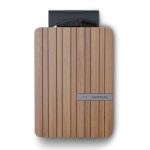
- 7kW
- Tethered
- From £1199 or £49.37 Per Month
*includes standard installation

- 7kW
- All in One
- From £1034 or £30 Per Month
*includes standard installation
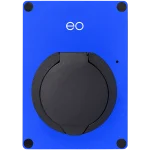
- 7.2kW
- Tethered or Untethered
- From £845 or £14.07 Per Month
*includes standard installation
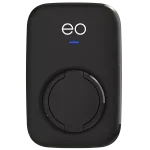
- 7.2kW
- Tethered or Untethered
- From £1139 or £15.63 Per Month
*includes standard installation
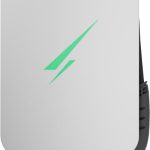
- 7kW
- Tethered
- From £979
*includes standard installation
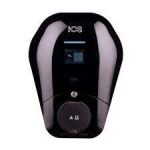
- 7.2kW
- From £830 or £15.63 Per Month
*includes standard installation
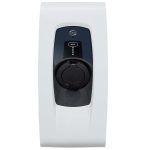
- 7.4kW
- Tethered or Untethered
- From £845 or £14.07 Per Month
*includes standard installation
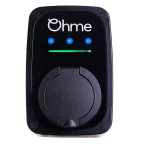
- 7kW
- Untethered
- From £949 or £28.86 Per Month
*includes standard installation
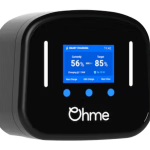
- 7kW
- Tethered
- From £1079 or £20.89 Per Month
*includes standard installation
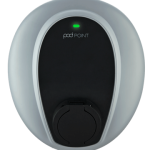
- 7kW
- Tethered or Untethered
- From £895 or £33.13 Per Month
*includes standard installation
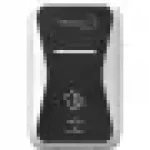
- 7.3kW
- Untethered
- From £850
*includes standard installation
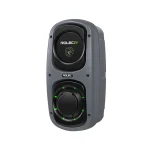
- 7.4kW
- Universal or Type 2 Tethered
- From £866
*includes standard installation
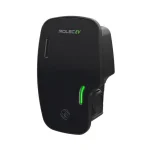
- 7.4kW
- 1 x or 2x Universal Sockets
- From £1,249
*includes standard installation
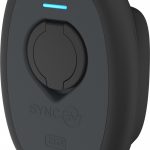
- 7.4kW
- Type 2 socket with auto-lock
- From £895
*includes standard installation

- 7.4kW
- Type 2 socket with auto-lock
- From £895
*includes standard installation

- 7.4kW
- Tethered Type 2
- From £969
*includes standard installation
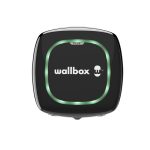
- 7.4kW
- Tethered Type 2
- From £849 or £17.40 Per Month
*includes standard installation
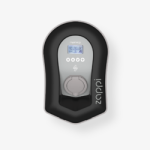
- 7kW
- Tethered or Untethered
- From £1079 or £20.89 Per Month
*includes standard installation
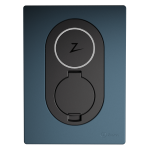
- 7.4kW
- Universal Socket
- From £995
*includes standard installation

